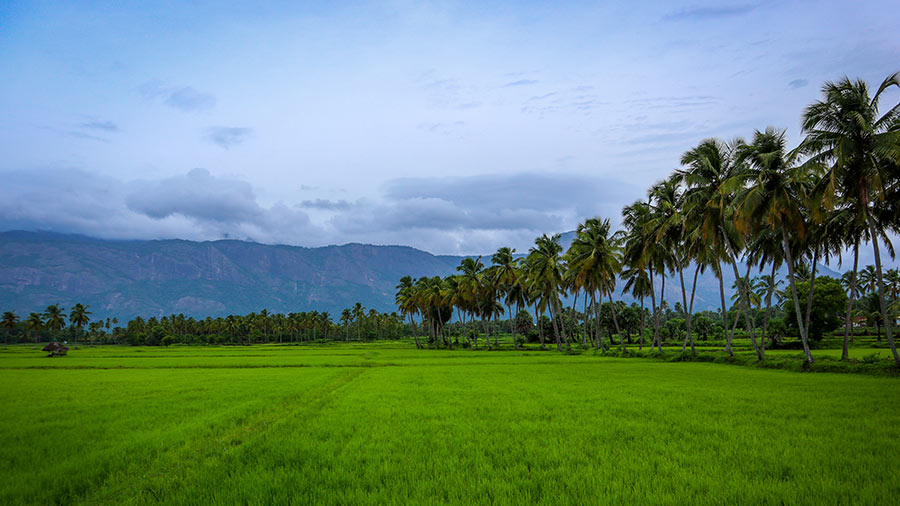India has been talking free trade agreements with several partners – both bilateral and regional – in a bid to boost export-oriented domestic manufacturing.
These FTAs cover a wide array of topics, such as tariff reduction impacting the entire manufacturing and the agricultural sectors; rules on services trade; digital issues such as data localization; intellectual property rights that may have an impact on the accessibility of pharmaceutical drugs; and investment promotion, facilitation, and protection.
At present, India is negotiating FTAs with several regions and nations, including the New Zealand, US, European Union (EU), Oman, Peru, EFTA, Qatar, and Sri Lanka.
Talks with the US, and EU remain a priority, with the goal of concluding agreements in the near future
List of major free trade agreements
|
Country/bloc |
Agreement type |
Status and key updates |
Participating countries |
|
Chile |
CEPA |
|
India, Chile |
|
New Zealand |
FTA |
Negotiations resumed on March 16, 2025, after a decade-long pause. Bilateral trade exceeded US$1 billion (April–January 2025). |
India, New Zealand |
|
United States |
Trade Agreement |
India and the U.S. aim to double trade to US$500 billion by 2030. Trade deal expected within 6-8 months (as of February 2025). |
India, USA |
|
United Kingdom |
FTA |
Finalized on the 6th of May 2025. The new trade agreement is projected to boost annual bilateral trade between India and the UK by £25.5 billion. |
India, UK |
|
European Union (EU) |
FTA |
Next round of negotiations scheduled for March 10-14, 2025, in Brussels. |
India, 27 EU nations |
|
Oman |
CEPA |
CEPA discussions advanced in January 2025. Talks officially began in November 2023. |
India, Oman |
|
European Free Trade Association (EFTA) |
TEPA |
Signed on March 10, 2024; expected to take effect by late 2025. |
India, Iceland, Liechtenstein, Norway, Switzerland |
|
ASEAN |
AITIGA (FTA Review) |
Fifth Joint Committee meeting scheduled for February 2025 in Jakarta. |
India, 10 ASEAN nations |
|
Qatar |
Potential FTA |
India and Qatar exploring an FTA to double trade to US$28 billion within five years. |
India, Qatar |
|
Canada |
CEPA |
Negotiations re-launched in March 2022 but paused as of September 2023. |
India, Canada |
|
Gulf Cooperation Council (GCC) |
FTA |
Talks resumed in November 2022, with GCC planning formal discussions in 2025. |
India, Saudi Arabia, UAE, Qatar, Kuwait, Oman, Bahrain |
|
SAARC Nations |
SAFTA (2006) |
Reduces tariffs among SAARC nations. |
India, Afghanistan, Bangladesh, Bhutan, Maldives, Nepal, Pakistan, Sri Lanka |
|
Sri Lanka |
ISFTA (2000) |
Promotes bilateral trade. |
India, Sri Lanka |
|
Nepal |
Treaty of Trade |
Provides duty-free access to primary products. |
India, Nepal |
|
Bhutan |
Trade Agreement |
Eliminates tariffs on multiple goods. |
India, Bhutan |
|
Thailand |
FTA (2004) |
Initiated under the Early Harvest Scheme. |
India, Thailand |
|
Singapore |
CECA |
Covers trade, services, and investment. |
India, Singapore |
|
Malaysia |
CECA (2011) |
Covers trade, services, and investments. |
India, Malaysia |
|
Japan |
CEPA (2011) |
Eliminates tariffs on most goods. |
India, Japan |
|
South Korea |
CEPA |
Reduces tariffs and promotes trade. |
India, South Korea |
|
ASEAN |
FTA (2010, expanded 2014) |
Covers goods and services. |
India, ASEAN |
|
Mauritius |
CECPA (2021) |
India’s first trade agreement with an African nation. |
India, Mauritius |
|
UAE |
CEPA (2022) |
Boosts bilateral trade. |
India, UAE |
|
Australia |
ECTA (2022) |
Supports key sectors like agriculture and minerals. |
India, Australia |
|
UAE |
BIT |
Signed in February 2024, effective August 31, 2024, to protect foreign portfolio investments. |
India, UAE |
|
Uzbekistan |
BIT |
Signed in 2024 to enhance investment flows. |
India, Uzbekistan |
|
Bangladesh |
BIT |
Strengthens investment cooperation. |
India, Bangladesh |
|
Belarus |
BIT |
Aims to protect and promote mutual investments. |
India, Belarus |
|
Kyrgyzstan |
BIT |
In effect since June 5th, 2025. Enhances economic collaboration through investment protection. |
India, Kyrgyzstan |
|
Thailand |
BIT |
Encourages investment and trade ties. |
India, Thailand |
|
Trinidad & Tobago |
BIT |
Promotes bilateral investments and economic cooperation. |
India, Trinidad & Tobago |
|
Switzerland & Liechtenstein |
BIT (Planned) |
Pushing for BIT after the India-EFTA TEPA agreement. Switzerland suspended the MFN clause in DTAA, leading to higher taxes for Swiss firms. |
India, Switzerland, Liechtenstein |
|
India |
Duty-Free Tariff Preference Scheme |
Covers 46 Least Developed Countries (LDCs). |
India, 46 LDCs |
|
United Kingdom |
Developing Countries Trading Scheme |
Covers 65 developing countries, including India. |
India, UK, 64 others |
|
Armenia |
GSP |
Covers 153 countries, including India. |
India, Armenia, 152 others |
|
Australia |
GSP |
Covers 177 countries, including India. |
India, Australia, 176 others |
|
European Union (EU) |
GSP |
Covers 88 countries, including India. |
India, EU, 87 others |
|
Japan |
GSP |
Covers 130 countries, including India. |
India, Japan, 129 others |
|
Kazakhstan |
GSP |
Covers 153 countries, including India. |
India, Kazakhstan, 152 others |
|
Kyrgyz Republic |
GSP |
Covers 153 countries, including India. |
India, Kyrgyz Republic, 152 others |
|
New Zealand |
GSP |
Covers 140 countries, including India. |
India, New Zealand, 139 others |
|
Norway |
GSP |
Covers 122 countries, including India. |
India, Norway, 121 others |
|
Switzerland |
GSP |
Covers 123 countries, including India. |
India, Switzerland, 122 others |
Major Free Trade Agreements
India-UK FTA
After three years of negotiations, India and the United Kingdom finalized a landmark Free Trade Agreement (FTA) on May 6, 2025, set to increase bilateral trade by an estimated £25.5 billion. The deal eliminates tariffs on 99 percent of Indian exports and 90 percent of UK exports, streamlining market access and reducing costs for businesses and consumers on both sides. It covers goods, services, and workforce mobility, including key provisions for service professionals and a social security exemption for short-term Indian workers in the UK.
The agreement also introduces phased tariff reductions on high-value UK exports such as whisky, medical equipment, and automobiles, while excluding sensitive Indian sectors like smartphones and certain industrial products. Aiming for full implementation within 15 months, the FTA is positioned as a strategic step toward achieving a US$120 billion bilateral trade target by 2030, fostering economic growth, innovation, and job creation in both countries.
EFTA TEPA
India and the EFTA bloc, which includes Iceland, Liechtenstein, Norway, and Switzerland, signed a Trade and Economic Partnership Agreement (TEPA) on March 10, 2024. The agreement is designed to strengthen trade and investment relations between the two sides. It is anticipated to take effect before the end of 2025, pending approval from EFTA member states.
ASEAN-India Free Trade Area
The signing of the ASEAN-India Trade Area (AIFTA) paved the way for the creation of one of the world’s largest free trade area markets, creating opportunities for over 1.9 billion people in ASEAN and India with a combined GDP of US$4.8 trillion. The agreement set off tariff liberalization on over 90 percent of products, including palm oil, pepper, black tea, and coffee.
Asia Pacific Trade Agreement
The Asia Pacific Trade Agreement (APTA), also known as the Bangkok Agreement, includes Bangladesh, India, Lao, China, Mongolia, South Korea, and Sri Lanka. APTA’s key objective is to hasten economic development among the participating countries.
The trade and investment liberalization measures covering merchandise goods and services aim to contribute to intra-regional trade and economic strengthening.
India-Japan Comprehensive Economic Partnership Agreement
The India-Japan Comprehensive Economic Partnership Agreement (CEPA) removes duties on almost 90 percent of products traded between the two countries. Sectors that have benefited from the lower duties include textiles, pharmaceuticals, agricultural products, tea, petrochemical and chemical products, cement, and jewelry.
India-Republic of Korea Comprehensive Economic Partnership Agreement
South Korea reduced tariffs on 17 Indian products, while India reduced import tariffs on 11 items. The agreement eases restrictions on foreign direct investments for both countries and will provide better access for the Indian service industry, such as IT, engineering, and finance, in South Korea.
India-Singapore Comprehensive Economic Partnership Agreement
The two countries have reduced or eliminated tariffs on several items. The trade agreement also eliminates tariff barriers, double taxation, duplicate processes, and regulations, and provides unhindered access and collaboration between the financial institutions of Singapore and India.
South Asian Free Trade Area
South Asian Free Trade Area (SAFTA) aims to reduce customs duties on all traded goods to zero.
SAFTA categorized Bangladesh, Bhutan, Maldives, and Nepal as Least Developed Contracting States (LDCs) and India, Pakistan, and Sri Lanka as Non-Least Developed Contracting States (NLDCs).
The SAFTA Agreement provides for a phased tariff liberalization program (TLP) under which, in two years, NLDCS would bring down tariffs to 20 percent, while LDCS will bring them down to 30 percent. Non-LDCS will then bring down tariffs from 20 percent to 0-5 percent in 5 years (Sri Lanka 6 years), while LDCS will do so in 8 years. NLDCs will reduce their tariffs for L.D.C. products to 0-5 percent in 3 years. This TLP would cover all tariff lines except those kept in the sensitive list (negative list) by the member states.
India-UAE Comprehensive Economic Partnership Agreement (CEPA)
The India-UAE CEPA is likely to benefit about US$26 billion worth of Indian products that are subjected to 5 percent import duty by the UAE. Overall UAE is offering elimination of duties on 97 percent of its tariff lines corresponding to 99 percent of imports from India. 90 percent of India’s total exports to the UAE in value terms would become duty-free immediately upon entry into force of the CEPA.
The UAE’s immediate zero-duty market access offer to India covers all labor-intensive sectors such as gems and jewelry, textiles, leather, footwear, sports goods, plastics, furniture, agricultural and wood products, engineering products, pharmaceuticals, medical devices, and Automobiles. UAE can also become a hub for sourcing India’s capital goods and intermediates for further value-added exports to other destinations in Africa and Europe.
Also, for the first time in any Trade Agreement, a separate Annex on Pharmaceuticals has been incorporated to facilitate access to Indian pharmaceutical products, especially automatic registration and marketing authorization in 90 days for products approved by developed country regulators, namely the United States (USFDA), the United Kingdom (UKMHRA), the European Union (EMA), and Japan (PMDA).
India-Australia CEPA
Australia’s parliament ratified the India-Australia Economic Cooperation and Trade Agreement (ECTA) on November 22. Under the India-Australia ECTA, duties on 100 percent tariff lines will be eliminated by Australia, covering 6,000 broad sectors. Meanwhile, India’s tariffs on 90 percent of Australian goods exports, including meat, wool, cotton, seafood, nuts, and avocados, will be removed.
Exporters, businesses, workers, and consumers in both markets are set to benefit from the trade liberalization, market opening, and freer movement of people.
Implementation of the trade agreement will create an estimated one million jobs as a boost in business is expected in several labor-intensive industries, including textiles and apparel, select agricultural and fish products, leather, footwear, furniture, sports goods, jewelry, machinery, electrical goods, and railway wagons.
Preferential Trade (PTAs)
India’s Preferential Trade Agreements seek to promote trade with other countries by lowering tariffs and providing access to new markets. This has helped ensure India’s position as a more appealing business location for exporters and importers.
Some strategic benefits of PTAs for India’s development include improved technology transfer, increased integration, and alignment with national standards, among others. A PTA is a formal trade agreement between countries that grants preferential access to specific products from participating countries by lowering tariffs and other trade restrictions.
India has signed six limited coverage Preferential Trade Agreements:
- SAARC Preferential Trading Agreement (SAPTA) – includes Bangladesh, Bhutan, India, Maldives, Nepal, Pakistan, and Sri Lanka.
- Asia-Pacific Trade Agreement (APTA) – previously known as the Bangkok Agreement, signed in 1975 with Bangladesh, China, India, South Korea, Laos, and Sri Lanka.
- India-MERCOSUR PTA – signed with Brazil, Argentina, Uruguay, and Paraguay in 2004; effective from June 1, 2009.
- India-Afghanistan PTA – signed on March 6, 2003.
- India-Chile PTA – strengthening economic ties with Latin America.
Double Tax Avoidance Agreements (DTAAs)
India has one of the largest networks of tax treaties for the avoidance of double taxation and prevention of tax evasion. India has established over 94 comprehensive DTAAs and eight limited DTAAs, compared with China’s 110 and Vietnam’s 80. The purpose of such tax treaties is to develop a fair and equitable system for the allocation of the right to tax several types of income between the ‘source’ and ‘residence’ countries.
Future of India’s Free Trade Agreements
India is negotiating FTAs with the UK, Canada, and the EU, targeting sectors like services, digital trade, and sustainable development. The FTA with the UK alone is expected to increase bilateral trade by US$ 15 billion by 2030. Future FTAs will likely focus on enhancing digital trade, with projections indicating that the digital economy could add US$1 trillion to India's GDP by 2025.
The shift towards regional supply chains and the impact of geopolitical changes, such as the US-China trade tensions, are influencing India's FTA strategies to ensure alignment with global trade dynamics.
FAQs on Free Trade Agreements in India
What is a Free Trade Agreement (FTA)?
A Free Trade Agreement (FTA) is a treaty between two or more countries to reduce or eliminate trade barriers such as tariffs, import quotas, and export restrictions on goods and services. The goal is to encourage trade and investment between the member countries by creating a more favorable trading environment.
How many countries has India signed FTAs with?
India has signed 13 Free Trade Agreements (FTAs) and six limited coverage Preferential Trade Agreements (PTAs) with various countries. Notable agreements include those with ASEAN, Japan, South Korea. The recent FTA with the European Free Trade Association (EFTA), which includes Iceland, Liechtenstein, Norway, and Switzerland is still under negotiation. These agreements ensure preferential trade relationships with over 50 countries. Additionally, India is negotiating several other FTAs, which could increase the number of countries with which it has preferential trade agreements in the future.
What are India's Preferential Trade Agreements (PTAs), and what benefits do they provide?
India’s Preferential Trade Agreements (PTAs) are trade pacts between India and other countries or regions that aim to reduce tariffs on certain goods, making trade easier and more beneficial for both parties. India has signed several PTAs, including agreements with MERCOSUR, ASEAN, and individual countries like Sri Lanka and Nepal.
Here are some key benefits of these agreements:
- PTAs provide Indian goods and services with easier access to foreign markets, enhancing export opportunities.
- By boosting trade and investment, PTAs contribute to India’s economic growth2.
- Lower tariffs reduce the cost of importing raw materials and components, which can lower production costs for Indian businesses.
- These agreements help improve the competitiveness of Indian businesses in the global market by providing them with a level playing field.
What are the benefits of India’s FTAs?
India’s FTAs provide several benefits, including:
- Easier access to foreign markets for Indian goods and services.
- Boosts economic growth by enhancing trade and investment.
- Lower tariffs reduce the cost of importing raw materials and components.
- Improves the competitiveness of Indian businesses in the global market.
Which sectors benefit the most from India’s FTAs?
The sectors that benefit the most from India’s FTAs include:
- Textiles and Garments: Significant export opportunities and reduced tariffs.
- Information Technology: Increased access to foreign markets for IT services.
- Pharmaceuticals: Easier entry into regulated markets.
- Automotive: Lower tariffs on components and finished goods enhance competitiveness.
What challenges does India face with FTAs?
India faces several challenges with FTAs, including:
- Trade Deficits: Increased imports can lead to trade deficits with partner countries.
- Protection of Domestic Industries: Difficulty in protecting sensitive sectors from foreign competition.
- Complex Negotiations: Lengthy and complex negotiation processes.
- Regulatory Barriers: Non-tariff barriers and differing regulatory standards.
How do FTAs affect Indian consumers?
FTAs generally benefit Indian consumers by:
- Reduced tariffs lead to lower prices for imported goods.
- Increased variety of goods and services available.
- Access to higher-quality imported products.
What is the future outlook for India’s FTAs?
The future outlook for India’s FTAs is promising, with ongoing negotiations for new agreements and updates to existing ones. India is actively seeking to expand its FTA network to include more countries and regions, which could further boost trade and investment. However, careful negotiation is needed to balance benefits with protecting domestic industries.
How do FTAs impact India’s economy?
FTAs impact India’s economy by:
- Increased export and import activities boost economic growth.
- Greater market access attracts foreign direct investment.
- Specific sectors like textiles, IT, and pharmaceuticals experience growth due to reduced trade barriers.
- Indian businesses become more competitive globally.
- Expanded trade opportunities can lead to job creation in export-oriented industries.










